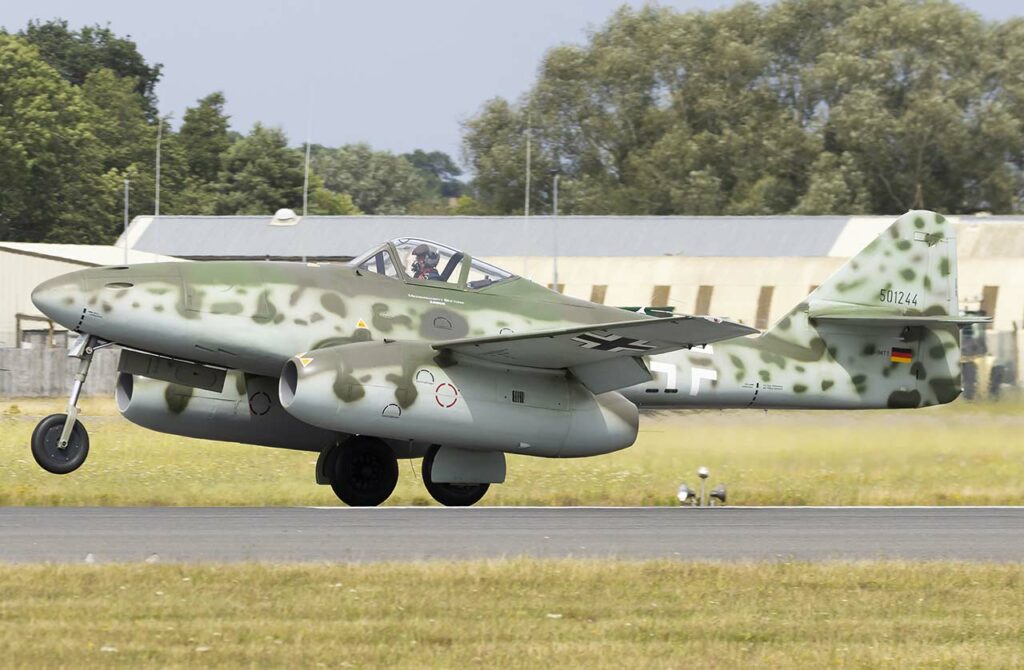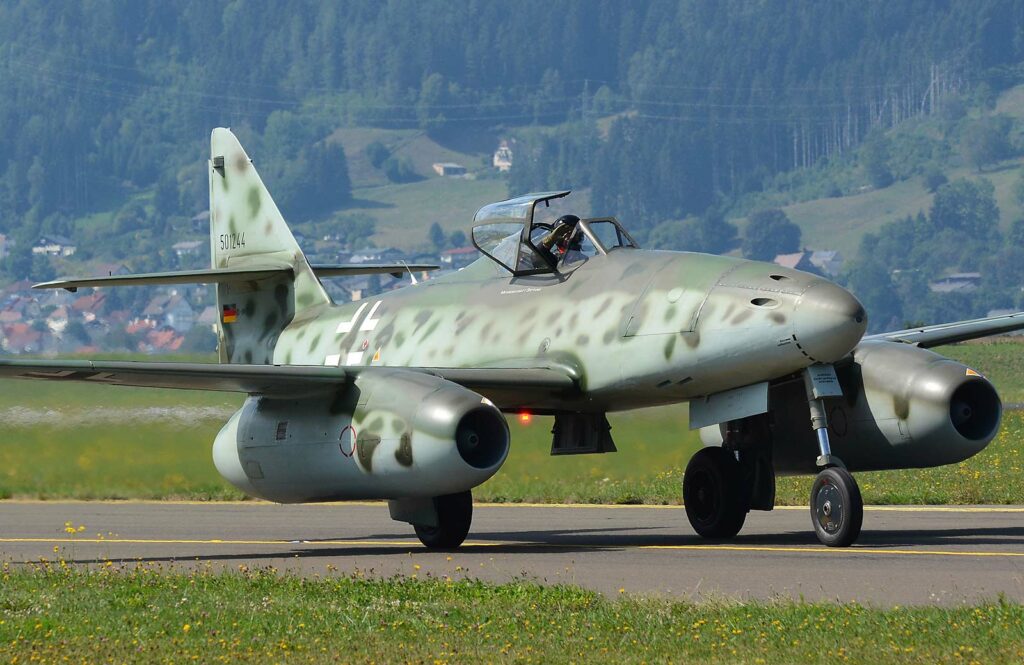The Messerschmitt Me 262, the world’s first operational jet-powered fighter aircraft, marked a revolutionary leap in aviation technology during WWII.
This article examines the Messerschmitt Me 262, a groundbreaking jet fighter of World War II. It covers the aircraft’s development, innovative design, performance characteristics, and its role in military operations, highlighting its impact on aerial combat and its technological significance during the war.
The Messerschmitt Me 262 was a significant technological advancement in military aviation history. As the first operational jet-powered fighter aircraft, it represented a paradigm shift in air combat during World War II. This article explores the development, design, capabilities, and combat history of the Me 262, underscoring its revolutionary impact on aerial warfare.

History of the Development of the Messerschmitt Me 262
The development of the Me 262 began in the late 1930s, a period marked by rapid advancements in aviation technology and the looming threat of global conflict. The Luftwaffe, seeking a superior advantage in air combat, initiated the development of a jet-powered fighter.
The project, led by Messerschmitt and chief designer Willy Messerschmitt, aimed to create an aircraft that could outperform any Allied fighter in speed and armament. The first prototype of the Me 262 flew on April 18, 1941, with a conventional piston engine, and later with its intended jet engines.
Its development was driven by the strategic necessity for advanced military technology and the potential to achieve air superiority with jet propulsion.
Design of the Messerschmitt Me 262
The Me 262’s design was revolutionary. It was powered by two Junkers Jumo 004 turbojet engines, each producing 900 kgf (8.8 kN) of thrust. The aircraft’s airframe was designed to accommodate these engines, with swept wings and a streamlined fuselage to optimize aerodynamic efficiency.
The Me 262 had a length of 10.6 meters and a wingspan of 12.5 meters. One of its design advantages was its speed, which was unmatched by any piston-engine fighter of the era. However, the jet engines were prone to reliability issues and had a short operational lifespan.
The aircraft’s design included advanced features such as tricycle landing gear and a pressurized cockpit, which were innovative for the time. The challenges in its design and production, however, limited the number of aircraft that could be deployed.
Performance of the Messerschmitt Me 262
In terms of performance, the Me 262 was exceptional for its time. It could reach speeds of up to 870 km/h (540 mph) and had a service ceiling of 11,450 meters (37,565 feet). The aircraft’s range was approximately 1,050 kilometers (652 miles), sufficient for short to medium-range missions.
Compared to contemporaries like the P-51 Mustang or the Spitfire, the Me 262 was significantly faster and more heavily armed, though it was less agile. Its speed made it nearly untouchable in straight flight, but its performance in turning combat was inferior to that of piston-engine fighters.

Military Use and Combat of the Messerschmitt Me 262
The Me 262 was armed with four 30 mm MK 108 cannons and could carry rockets or bombs, making it versatile as both a fighter and a fighter-bomber. It was used in a variety of roles, from intercepting Allied bombers to ground-attack missions.
In combat, the Me 262 proved to be highly effective, particularly in its primary role of bomber interception. However, its impact was limited by production challenges, fuel shortages, and the advanced stage of the war when it was introduced.
The Me 262 was primarily used by Nazi Germany, with no significant exports during the war. Post-war, its design influenced jet aircraft development in various countries, but it was quickly superseded by more advanced jet fighters.
The Messerschmitt Me 262 was a groundbreaking aircraft that marked the dawn of the jet age in military aviation. Its development, design, and operational use during World War II represented a significant leap in technology and tactics, setting the stage for future advancements in aerial combat. Despite its limitations and the late stage of its deployment, the Me 262 remains a symbol of innovative engineering and a significant milestone in the history of military aircraft.
Back to the Fighter Jet section.